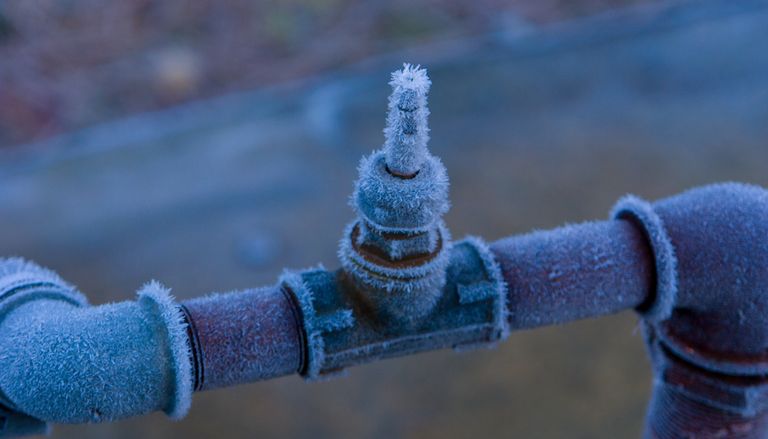How to Avoid Frozen Plumbing in Cold Weather: Pro Guidance
How to Avoid Frozen Plumbing in Cold Weather: Pro Guidance
Blog Article
On this page on the next paragraphs you can discover a lot of superb guidance all about Preventing and dealing with frozen pipes.

Cold weather can wreak havoc on your pipes, especially by freezing pipelines. Below's exactly how to avoid it from happening and what to do if it does.
Introduction
As temperatures decrease, the risk of frozen pipelines rises, possibly causing pricey repairs and water damages. Recognizing how to prevent frozen pipes is crucial for homeowners in chilly climates.
Recognizing Frozen Pipelines
What triggers pipelines to freeze?
Pipelines freeze when subjected to temperature levels below 32 ° F (0 ° C) for expanded periods. As water inside the pipes ices up, it increases, putting pressure on the pipeline walls and possibly triggering them to burst.
Risks and problems
Frozen pipes can result in water supply disturbances, residential or commercial property damages, and pricey repair services. Ruptured pipelines can flooding homes and trigger considerable structural damage.
Signs of Frozen Water Lines
Determining frozen pipes early can prevent them from breaking.
Exactly how to identify icy pipes
Search for decreased water circulation from faucets, unusual smells or sounds from pipes, and noticeable frost on revealed pipelines.
Prevention Tips
Shielding at risk pipelines
Wrap pipelines in insulation sleeves or use warm tape to shield them from freezing temperature levels. Focus on pipes in unheated or outside locations of the home.
Heating techniques
Maintain indoor spaces appropriately heated, particularly locations with pipes. Open cabinet doors to allow cozy air to circulate around pipelines under sinks.
Shielding Outside Pipes
Garden tubes and outdoor taps
Disconnect and drain pipes garden tubes before wintertime. Set up frost-proof faucets or cover exterior faucets with shielded caps.
What to Do If Your Pipelines Freeze
Immediate actions to take
If you presume icy pipes, maintain faucets available to ease pressure as the ice melts. Make use of a hairdryer or towels taken in hot water to thaw pipelines slowly.
Long-Term Solutions
Architectural modifications
Think about rerouting pipes away from outside walls or unheated locations. Add added insulation to attics, basements, and crawl spaces.
Updating insulation
Invest in top quality insulation for pipelines, attics, and wall surfaces. Appropriate insulation helps preserve regular temperature levels and lowers the danger of icy pipes.
Verdict
Preventing icy pipelines requires proactive procedures and quick responses. By comprehending the causes, indicators, and preventive measures, home owners can safeguard their plumbing throughout cold weather.
5 Ways to Prevent Frozen Pipes
Drain Outdoor Faucets and Disconnect Hoses
First, close the shut-off valve that controls the flow of water in the pipe to your outdoor faucet. Then, head outside to disconnect and drain your hose and open the outdoor faucet to allow the water to completely drain out of the line. Turn off the faucet when done. Finally, head back to the shut-off valve and drain the remaining water inside the pipe into a bucket or container. Additionally, if you have a home irrigation system, you should consider hiring an expert to clear the system of water each year.
Insulate Pipes
One of the best and most cost-effective methods for preventing frozen water pipes is to wrap your pipes with insulation. This is especially important for areas in your home that aren’t exposed to heat, such as an attic. We suggest using foam sleeves, which can typically be found at your local hardware store.
Keep Heat Running at 65
Your pipes are located inside your walls, and the temperature there is much colder than the rest of the house. To prevent your pipes from freezing, The Insurance Information Institute suggests that you keep your home heated to at least 65 degrees, even when traveling. You may want to invest in smart devices that can keep an eye on the temperature in your home while you’re away.
Leave Water Dripping
Moving water — even a small trickle — can prevent ice from forming inside your pipes. When freezing temps are imminent, start a drip of water from all faucets that serve exposed pipes. Leaving a few faucets running will also help relieve pressure inside the pipes and help prevent a rupture if the water inside freezes.
Open Cupboard Doors
Warm your kitchen and bathroom pipes by opening cupboards and vanities. You should also leave your interior doors ajar to help warm air circulate evenly throughout your home.

I hope you enjoyed reading our piece on Helpful Tips to Prevent Frozen Pipes this Winter. Thanks so much for finding the time to read through our article. Sharing is caring. Helping people is fun. I cherish your readership.
Schedule A Free Estimate Report this page